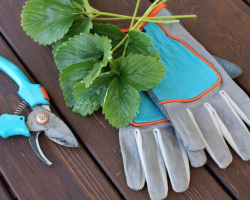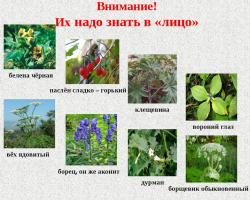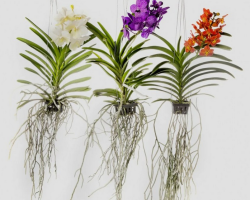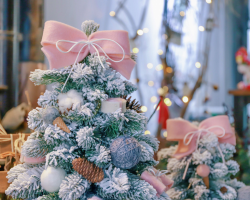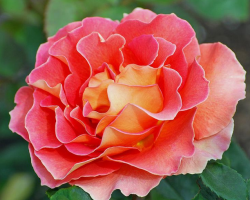Trees with weeping crowns are beautiful and perfectly transform any garden.
Content
- Types of trees with weeping crown
- Video: Black coniferous for the garden
- The formation of a weeping shape of the crown of trees to transform the garden: how to do the right thing?
- Video: Cross -fit. How am I forming a crown of a standard tree?
- Where to plant a tree with a weeping crown?
- Trees with a weeping shape of the crown - what are able to do: signs and superstitions
- Video: Silchous mulberry - pruning
- Video: Rowan Boar - without vaccination, with your own hands
- Video: Cross -fit and its weeping shape. Range, agricultural technology, disease
Thin delicate twigs, timidly lowered to the ground. Trees with weeping crowns are not trying to reach the sun, but humbly worship him. The game of wind in them is fabulously beautiful. Basic trees are the most romantic gift that we can make to our garden. And the surest way to completely change its appearance, bringing completely new sensations from a beautiful appearance of trees.
Read on our website another article on the topic: "What to plant near the house, arbors, fence?". You will learn which shrubs, trees, flowers can be planted near the house, and also how to plant flowers along the fence. Look for ideas, photos, instructions.
If you plant a tree with a weeping crown in your garden, you can increase your mood, since it is impossible to pass by the beautiful twigs hanging down. Read the article about what types of such trees exist and where it is better to plant them.
Types of trees with weeping crown
Many plants have a natural weeping shape of the crown. Others acquired it as a result of a long selection of breeders. There are views for every taste and for different features of the garden - large and small, traditional and exotic, deciduous, fruit trees, elegant bushes. Here are the types of trees with a weeping crown:

- Weeping willow - “Queen” of trees with weeping crowns. One of the most affordable options.
- We are used to seeing willow on the banks of the rivers, but it can give the garden a completely new look.
- It is unlikely that there is another tree whose branches will look more beautiful in the pond in the yard.
- Even if you do not have a water corner, willow will bring freshness and movements with branches, constantly swaying in the wind, will cheer up, will stand out with a colored spot against the background of other plants.
- It is beautiful at any time of the year and does not require special care.
- Among the most beautiful species - Salix Caprea, very attractive in the spring.

- Birch - One of the most beautiful trees, equally suitable for both parks and private gardens.
- It radiates tenderness and purity, does not reach too large and looks great both in the group and as a lone copy.
- Its crying shape of the crown has a slightly sad look, but very elegant.
- Thin branches intertwined into a picturesque mess are characteristic of the variety Jungs, and at Fristisa The twigs are weeping, but in general they form a rather rounded crown.

- Slopping shape of the elm (Ulmus scabra) was created by breeders from America in 1816.
- The crown is very dense, the sun almost does not penetrate through it.

- Yellow acacia or PENDULA - It also has a weeping shape.
- It looks like an unusual umbrella. Its branches are long, old forms the structure, and young people descend along the barrel.
- The leaves are exquisite, and this tree is really impressive with its appearance.

- Sorbus aucuparia or Rowan red - Traditionally used in parks.
- The leaves are cirrus and delicate, curved branches are quite densely located, and the fruits are bright and spectacular.
- Now such a tree increasingly began to plant landowners in their summer cottages.


- U ash There is one of the oldest forms - black Fraxinus ExcelSior "Pendula".
- Back in the mid -18th century, he gained great popularity in England.
- His crown is impressive with an interesting shape of a huge tent.
- Branches curved like arches reach the ground.
- Another interesting species - an ordinary one -legged weeping rod - with an asymmetrically branched crown.

- Mulberry It has a spectacular weeping shape of branches, which, in addition to other advantages, is distinguished by amazing fruits.
- This tree reaches only 3-4 meters in height and is very suitable for small gardens.
- Dear branches rest on the ground, so tightly interwoven that they form a green tent.
- It tolerates pruning well.

- Chestnut - One of the favorite decorative species, especially for public green spaces.
- The popularity is not only ordinary chestnut, but also wearing, Japanese city -nosed.
- Its weeping shape is very beautiful and such a tree should be planted in the yard.

- Basic junipers Interesting and spectacular, although not so common.
- Pine, fir, thuja, larch - they look rather unexpected and attract attention, like a magnet with their unusual shape.

- When the garden is too small for large trunks, and I want to plant a wearing tree, the solution should be sought in shrubs.
- With branches beautifully bent to the ground, some varieties grow budlei, spirea, roses.
They are much smaller than trees, but create a romantic mood not only in their shape, but also with beautiful colors.
Video: Black coniferous for the garden
The formation of a weeping shape of the crown of trees to transform the garden: how to do the right thing?
Black plants created, as it were, to obtain unforgettable impressions, are a model of plasticity. They radiate elegance and grace, invite to contemplation and serenity. This form is irresistible for romantic gardeners. Even a wearing plant can fundamentally change the landscape. That is why landscape design experts willingly include them in their projects, and breeders do not cease to create wealthy forms of famous and rare species. Many of specially selected varieties have additional effects - beautiful flowers, interesting coloring of leaves, fruits that are long preserved on the plant.
In the shape of the crown, weeping plants are divided into three types:
- Some have very curved, hanging branches that form a slender “figure”.
- Other branches are bent like a rainbow - they are called a pendulum.
- In the third type - at first the branches grow parallel to the ground, and then bend down.
It is necessary to form a weed shape of the corn of the trees in order to transform the garden. To do it is simple, you need to cut the branches that grow up, leaving those that are inclined to the ground. But you can form a weeping crown of a conventional tree. How to do the right thing? Here are some tips:

- Cut the lower buds and remove everything that grows up.

- You can form a crown using various weights and dugs, wires or a strong rope.
- At a young tree you bend the twigs as you would like, and fix it. This is on the same principle, how Bonsai forms.

- You can also form a crown with vaccinations.
- In this way, you can achieve amazing results.
- If you take a penek with a tall of only a few cm, you get a soil-worshiping plant.
- Then you need to direct the twigs to the bottom.
- So you can do even a multi -tier fountain.


Caring for weeping plants has its own specifics. It will be good to remove all the branches that were low on the trunk to maintain a beautiful shape. The correct pruning of the crown by type of plant is the key that it will always delight you with its beauty.
Video: Cross -fit. How am I forming a crown of a standard tree?
Where to plant a tree with a weeping crown?
Basic plants look good in any part of the garden-at the entrance gate, at the path, on an exotic background of some flower bed or in a group with other trees. They soften strict forms, turn, for example, a bench not just into a place to relax, but into a romantic corner, bring comfort to the playground. Even in a very small garden, a small tree will create a real landscape. If you strive for something truly original, you should try to plant a group of crying trees of different heights and the color of the leaves. Where to plant a tree with a weeping crown?
- Probably, due to the most common of them, weeping willow, all these plants are associated with water.
- If you have a reservoir in the garden, then their place is necessarily next to it.
- They give a stream, a pond or even the pool a completely new, much more realistic appearance.
- The shape of the crown of such plants resembles a fountain, which even more associates them with water jets.
- If you plant a small crying tree and some vegetation around it, which usually grows near the water, you will create the illusion of the pond in your garden, even if you do not have it.

Trees with small branches are usually beautiful at any time of the year. Young petals and flowers in the spring look much more tender on them, in the summer they invariably attract their eyes. There are selected species in which autumn paints the leaves in bright and atypical colors. In winter, even with a thin snow cover, they create the illusion of deep snow.

The weeping shape is characteristic of trees of different species and different sizes. Among them are giants such as silver maple, Babylonian willow, some types of birch, which requires a really large space. They look great in parks or on the shore of ponds, but for most private gardens are too large. Usually they are planted among low trees, among which this shape of the crown is the most common. When there are very few places, miniature, weeping stem trees or shrubs come to the rescue. They look more tender, but no less remarkable than their larger counterparts.
Trees with a weeping shape of the crown - what are able to do: signs and superstitions
Some people say that a tree planted in the courtyard with a weeping shape of the crown can bring grief to its owners. So there is neither a logical reason, nor statistics confirming this. Perhaps the reason for this signs lies in the form itself, which is called crying and makes us involuntarily think about the condition when tears are blown up.
Perhaps superstition is still due to the fact that the branches of such trees, prone to the ground, fascinate the most romantic natures that tend to deeply experience unpleasant clashes with reality. Therefore, someone believes in such a sign, while others simply plant these beautiful crowns on their land plots. In the gardens of the courtyard, crying forms are similar to waterfalls and fountains.
Video: Silchous mulberry - pruning
Video: Rowal Boar - Without vaccination, with your own hands
Video: Cross -fit and its weeping shape. Range, agricultural technology, disease
Read on the topic:
- What is gum, cherries, apricot, cherries, and how to treat it?
- Pruning of fruit trees: technology, scheme and rules
- How to water a tree, bush, plant so that it dries?
- Vodka, alcohol, moonshine from aphids on trees, currants, cucumbers, peppers, cabbage
- TUI - decoration of the garden: what varieties of wood are the most popular, description, photo

